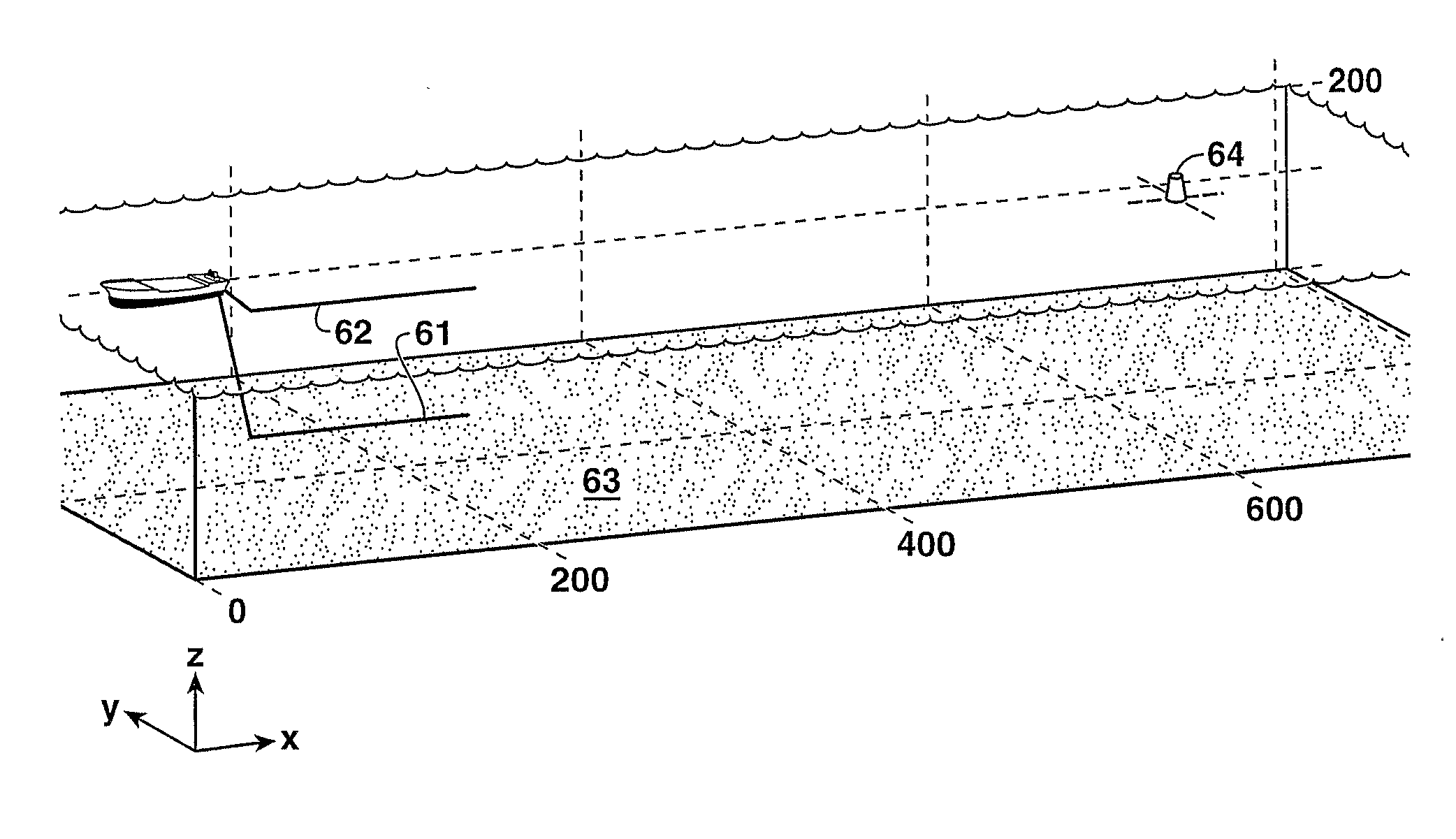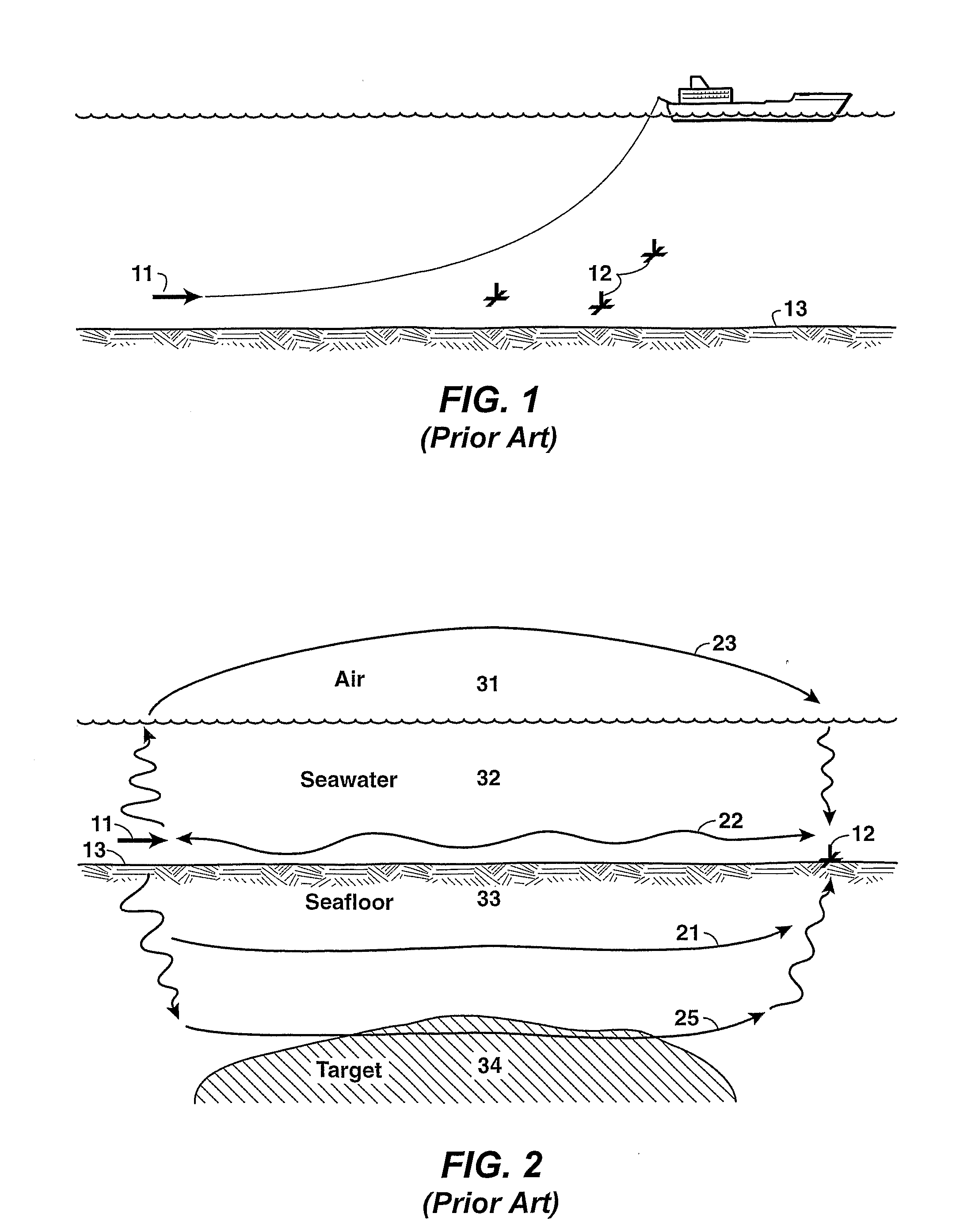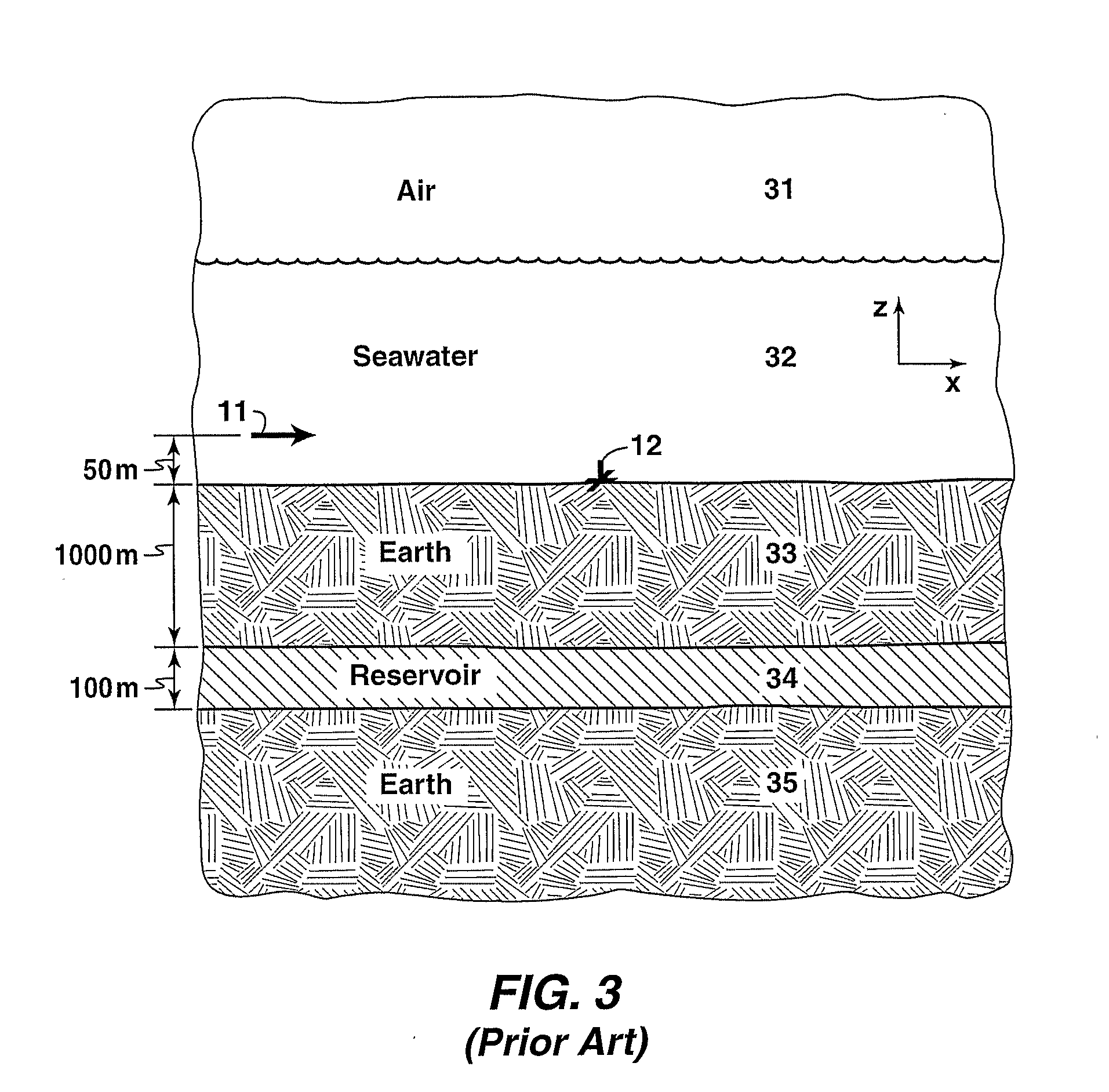Method for electromagnetic air-wave suppression by active cancellation and shielding
a shielding and electromagnetic technology, applied in seismology for waterlogging, instruments, reradiation, etc., can solve the problems of air wave effect, air wave interference, air wave noise, etc., to reduce electromagnetic energy traveling, reduce air wave noise, and reduce air wave nois
- Summary
- Abstract
- Description
- Claims
- Application Information
AI Technical Summary
Benefits of technology
Problems solved by technology
Method used
Image
Examples
examples
[0059]In the following two examples, 3D finite-element modeling is used to predict expected levels of air-wave suppression for a specified simple 1D earth model. The model uses a 1.25 Hz single frequency bipole source of 300 m length and moment of 1 A-m (for the primary source). The water is 120 m deep (5 S / m conductivity). The primary source bipole is 20 m above the water bottom while the secondary (when used) is 20 m from the top of the water giving a separation of 80 m. Below the water layer is 700 m of shale (0.714 S / m vertical and 1.333 S / m horizontal conductivity). Below this is a 100 m reservoir (0.02 S / m conductivity) and a half space of shale (same as above). This 1-D model can be seen reflected in FIGS. 10A-B and 12A-B. The signal-to-noise ratio (SNR) in these examples is defined as the average total electric field in the reservoir at distances greater than 5 km divided by the average total electric field in the air also at distances greater than 5 km from the source(s).
[0...
PUM
 Login to View More
Login to View More Abstract
Description
Claims
Application Information
 Login to View More
Login to View More - R&D
- Intellectual Property
- Life Sciences
- Materials
- Tech Scout
- Unparalleled Data Quality
- Higher Quality Content
- 60% Fewer Hallucinations
Browse by: Latest US Patents, China's latest patents, Technical Efficacy Thesaurus, Application Domain, Technology Topic, Popular Technical Reports.
© 2025 PatSnap. All rights reserved.Legal|Privacy policy|Modern Slavery Act Transparency Statement|Sitemap|About US| Contact US: help@patsnap.com



